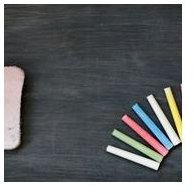Examples of Famous Onomatopoeia Poems
Onomatopoeia Poems
Make sure that what you learn is valuable beyond the walls of the classroom. As you study these examples of onomatopoeia poems, focus on the lasting benefits of becoming a poetry master. By the end of this guide, you should be able to:
-
- Know what onomatopoeia is, but simply knowing the definition is not sufficient.
- Identify examples of onomatopoeia in poetry on your own.
- Explain the purpose of the onomatopoeia and analyze how it contributes to the theme of the poem. I have provided an analysis with my examples to show you what I mean.
- Write poems containing onomatopoeia.
- Use onomatopoeia in your own writing to communicate more clearly.
[caption id=“attachment_130839” align=“aligncenter” width=“640”] Bang is a common example of onomatopoeia[/caption] Just what is onomatopoeia? Onomatopoeia is a word that imitates the source of a sound that the word describes. For example, a clock makes a tick tock noise. Tick and tock are examples of onomatopoeia. Below are several examples of onomatopoeia within famous poems.
Bang is a common example of onomatopoeia[/caption] Just what is onomatopoeia? Onomatopoeia is a word that imitates the source of a sound that the word describes. For example, a clock makes a tick tock noise. Tick and tock are examples of onomatopoeia. Below are several examples of onomatopoeia within famous poems.
Examples
Poem: “The Bells” by Edgar Allan Poe
Examples: How they tinkle, tinkle, tinkle, / In the icy air of night!; To the tintinnabulation that so musically wells / From the bells, bells, bells, bells, / Bells, bells, bells / From the jingling and the tinkling of the bells. (Part I Examples only)
Analysis: Viewing onomatopoeia in a vacuum without acknowledging Poe’s deft use of other sound devices sells the poem short. The purpose of the poem is to create an effect, an effect created through sound devices, including onomatopoeia. Even the repetition of the word “bells” is onomatopoeic. The hurried rhythm, internal rhyme, frequent repetition, alliteration, assonance, and consonance create the illusion of bedlam, a similar feeling to that created by ringing bells.
Poem: “Cynthia in the Snow” by Gwendolyn Brooks
Examples: It hushes / It shushes (1-2); It flitter-twitters (4); and whitely whirs away (7)
Analysis: Brooks attempts to recreate the feeling of a little girl playing in the snow (which, by the way is a metaphor). She uses imagery to describe snow and onomatopoeia to describe the sound of snow.
More Poems
Poem: “Honky Tonk in Cleveland, Ohio” by Carl Sandburg
Examples: It’s a jazz affair, drum crashes and cornet razzes. / The trombone pony neighs and the tuba jackass snorts. / The banjo tickles and titters too awful. (1-3).
Analysis: Sandburg uses onomatopoeia and other sound devices to recreate the sound and feeling of a honky tonk bar.
Poem: “The Highwayman” by Alfred Noyes
Examples: Over the cobbles he clattered and clashed in the dark inn-yard, / He tapped with his whip on the shutters, but all was locked and barred; Tlot tlot, tlot tlot! Had they heard it? The horse-hooves, ringing clear; / Tlot tlot, tlot tlot, in the distance! Were they deaf that they did not hear?
Analysis: Once again, the essence of poetic analysis begins with determining the author’s purpose. The author, in this poem, creates suspense through the use of onomatopoeia and other sound devices. Keep in mind the setting and the plot of the poem as you review these examples.
Poem: “The Rusty Spigot” by Eve Merriam
Example: The entire poem
Analysis: The essence of poetry is finding a concrete image and creating a theme around the image. Eve Merriam uses the concrete image of water coming out of a spigot, and creates it, in large measure, with onomatopoeia. The question is what is the theme? She creates a sense that water is fun through sound devices.
Poem: “Fossils” by Ogden Nash
Example: There were no drums or saxophones, / But just the clatter of their bones, / Rolling, rattling carefree circus, / Of mammoth polkas and mazurkas
Analysis: As part of his carnival, Nash creates a humorous section entitled “fossils.” He uses onomatopoeia to contribute to the humor.
Image by Thomas Mühl from Pixabay
This post is part of the series: Sound Devices in Poetry Study Guide
Sound Devices and form are powerful tools in the poet’s tool belt. Here’s how the masters use them.
